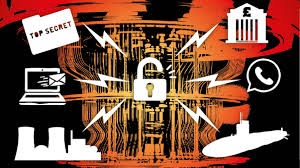
Data breaches have become an unfortunate staple of the digital age, with billions of usernames and passwords floating around on the dark web. This begs an unsettling question: if our credentials are already compromised, how will the forthcoming era of post-quantum cryptography change the security equation? Quantum computing promises unrivaled computational power, but it also threatens to dismantle many of today’s encryption algorithms, making stolen data from yesteryear still valuable tomorrow.
Why Quantum Computing Matters
Quantum computers use qubits instead of classical bits, enabling them to perform complex calculations at speeds that are unimaginable with current hardware. Many encryption standards rely on mathematical problems—like factoring large prime numbers—that would become trivial to solve on a sufficiently advanced quantum computer. As a result, data encrypted today might be at risk of being deciphered in the future if bad actors store it now and decrypt it once quantum capability matures.
The State of Harvested Credentials
- Credential Dumps: Massive troves of usernames and passwords are routinely sold or traded among cybercriminals.
- Reuse Attacks: Many people reuse passwords across multiple services, compounding the risk when a single breach occurs.
- Long-Term Storage: Attackers increasingly adopt a “collect now, decrypt later” mindset, hoarding encrypted data and compromised credentials in hopes of a quantum breakthrough.
Post-Quantum Cryptography
Cryptographers are developing “quantum-resistant” algorithms—often referred to as post-quantum or PQC—that can withstand the computational onslaught of quantum machines. The U.S. National Institute of Standards and Technology (NIST) is currently standardizing these algorithms, aiming to future-proof sensitive data.
- Proactive Encryption Migration
Organizations can start transitioning to PQC algorithms to secure stored data. However, credentials already exposed remain a weak link unless individuals change passwords and adopt more secure authentication methods. - Multi-Factor Authentication (MFA)
MFA can neutralize compromised passwords by requiring an additional factor, such as a fingerprint or time-based one-time password (TOTP). - Passwordless Future
Many experts see a future dominated by public-key cryptography and biometric solutions that obviate the need for passwords altogether. - Zero Trust Architectures
Even if credentials are compromised, a Zero Trust approach—requiring continuous verification—limits the damage attackers can do.
The Role of IAM in a Post-Quantum World
Identity and Access Management platforms must evolve to:
- Support Quantum-Resistant Protocols
As new standards emerge, IAM solutions should integrate seamlessly.
- Offer Adaptive Authentication
Real-time risk assessment can detect anomalies, like impossible travel (logging in from two distant locations within minutes).
- Emphasize Credential Hygiene
Regular prompts for password updates, risk-based re-authentication, and forced credential rotations become even more critical.
Practical Steps for Organizations
- Inventory All Identities
Know who has access to what. This foundational step aids in migrating to secure post-quantum credentials. - Early Adoption of PQC
Begin testing quantum-resistant algorithms in non-production environments. - Educate Users
Password management best practices, MFA usage, and phishing awareness remain crucial lines of defense.
Where Does This Leave Our Harvested Credentials?
- Proactive Encryption Migration
Organizations can start transitioning to PQC algorithms to secure stored data. However, credentials already exposed remain a weak link unless individuals change passwords and adopt more secure authentication methods. - Multi-Factor Authentication (MFA)
MFA can neutralize compromised passwords by requiring an additional factor, such as a fingerprint or time-based one-time password (TOTP). - Passwordless Future
Many experts see a future dominated by public-key cryptography and biometric solutions that obviate the need for passwords altogether. - Zero Trust Architectures
Even if credentials are compromised, a Zero Trust approach—requiring continuous verification—limits the damage attackers can do.
Yes, attackers may already possess vast stores of usernames and passwords. But as we edge into a post-quantum cryptographic landscape, proactive steps can still mitigate the risk. Embracing MFA, Zero Trust architectures, and eventually quantum-resistant standards will help ensure that even stolen credentials won’t be a golden ticket for cybercriminals. The key lies in staying one step ahead, adopting future-proof security measures, and fostering a culture of continuous awareness.